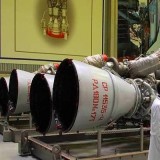Defence Minister Inaugurates A State-of-The-Art Test Facility of Raphe Mphibr, An iDEX Winner, In Uttar Pradesh
Defence Minister Rajnath Singh inaugurated a state-of-the-art test facility of Raphe mPhibr, an iDEX winner start-up, on August 30, 2025...




